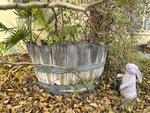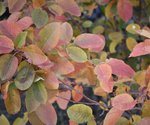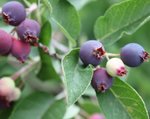


The first heavy frost recently signaled the end of the bustling garden season, and I’m glad for the respite from battling the prolific weeds from this summer’s monsoon rains. However, we still have plenty of pleasant sunny afternoons that entice us to get out there and tidy up the yard. What if I told you, it was really a good thing to procrastinate on fall garden cleanup chores? Like most other landscaping companies, I used to offer a fall cleanup service. As I pivoted toward a more sustainable ecological footprint, I had to step back and look at those dead flowers and ornamental grasses from the perspective of the birds and other critters trying to make it through another cold winter.
The insects and birds that delighted us during the summer have their own strategies for surviving the coming deep freeze, and plants again play a major role in their survival. The monarch butterfly is the only pollinator in North America that always migrates to a warmer climate, so how do other pollinators cope? Bumblebees die at the end of summer, except for the fertilized queen. She burrows into soil or leaf litter so that there is less variation in winter temperatures. And here’s a great Trivial Pursuit factoid: the hibernating queen produces glycerol, a natural antifreeze! Depending on the species, butterflies will overwinter as eggs, caterpillars, pupae, or adults. They too depend on the production of glycerol or other sugars during the fall to prevent the formation of ice crystals in their cells. My garden hosted black swallowtail butterflies, which overwinter as pupae. The host plant (where it lays its eggs) for the black swallowtail in my yard is dill, so I’m sure the next generation is present somewhere in the yard. Tall grasses, bushes, fence posts, a pile of leaves or sticks…this is where next year’s butterflies are sleeping. They don’t know to put out ‘Do Not Disturb’ signs, so we need to remember for them. If you have an extra sensitive tidiness gene, cut back the offending perennials or grasses and leave the debris lying in the bed until spring to avoid throwing away hibernating pollinators.
Another aspect of closing down the garden for the season is reviewing what worked or didn’t and planning for next year. I’m dating myself by saying that I loved looking at the ‘Monkey Ward’ catalog as a child to see what Santa might bring. Looking through seed and plant catalogs in the depth of winter fulfill that function! One aspect of plants the catalogs emphasize is attractive fall color. I lived in New England for 13 years, so I’ve experienced the most intense fall colors you can imagine. Our fall colors may be less intense, but still appreciated. I would like to introduce you to an excellent plant that provides season round interest and fantastic fruit to boot. This shrub/small tree is called serviceberry (Amelanchier species) here in the west because it blooms about the time of the spring thaw, indicating to the pioneers that basic services like funerals, baptisms, and marriages could be performed. It’s also called saskatoon, juneberry, or shadbush depending on where you live in the continental US. The beautiful white flowers produce blueberry-like fruits in June, much loved by wildlife and humans. People compare the taste to a cross between a blueberry and apple. The serviceberry’s fall color is also reminiscent of blueberry bushes, as can be seen in the adjacent photo. Blueberries cannot be successfully grown here due to the alkaline soil, but serviceberries are totally adapted to our soils. The serviceberries in my back yard were schlepped from southern Colorado to Silver City, and after a season spent recovering from the move are producing again. I do have a couple of caveats about growing serviceberries in this region. First, they seem to like higher elevations. Second, they will need additional moisture, especially during the fruiting stage in late spring. I have partially solved the moisture issue by creating rain gardens around the plants. Rain gardens and their creation will be discussed in a future article.
People in New England may brag about fall colors, but WE know where Georgia O’Keefe got her color combo inspirations. I see it through my kitchen window nearly every evening, as well as in the stunning art coming from our regional artists. Moreover, I don’t have to freeze my “you know what” off for several months of the year to experience a few fleeting weeks of intense color. I consider that a change for the better!